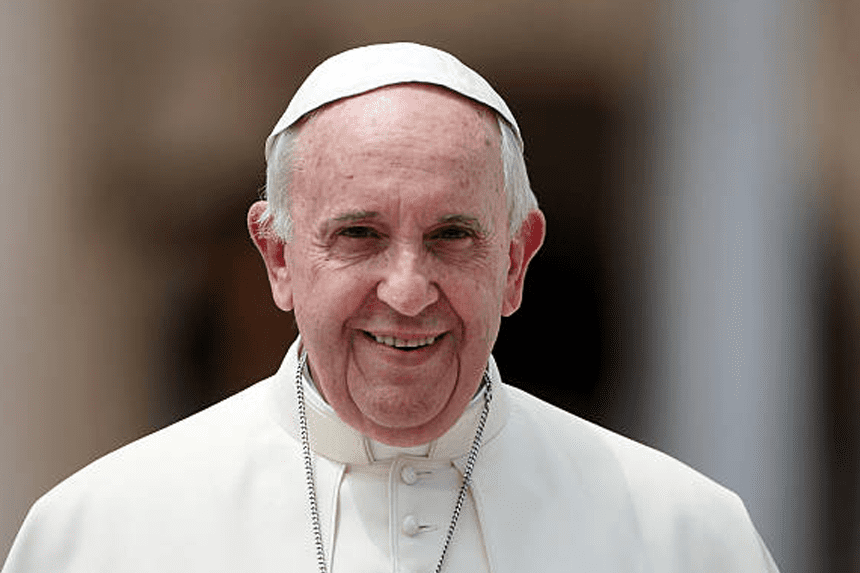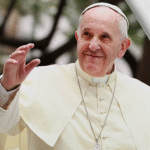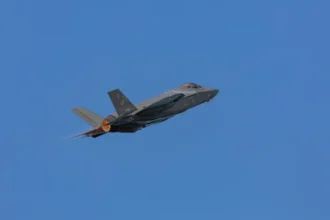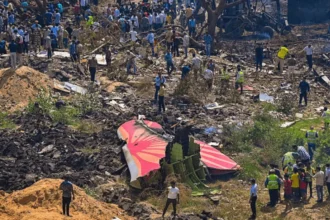Pope Francis’ visit to the Philippines in January 2015 remains one of the most profound moments in the country’s history. During his visit, he gave his time, words, and prayers to a nation that had suffered unimaginable loss due to Typhoon Haiyan just two years earlier. The Pope Francis’ impact in the Philippines was evident in his unwavering commitment to the Filipino people, despite the severe weather conditions he faced during his visit. His actions were not just symbolic; they resonated deeply with millions of Filipinos, leaving a legacy that will never be forgotten.
Why Did Pope Francis Choose to Hold Mass in Tacloban Despite Typhoon Warnings?
As Typhoon Amang gathered strength, many urged Pope Francis to cancel his scheduled mass in Tacloban, a city devastated by Super Typhoon Haiyan in 2013. However, the Pope was resolute. He understood the importance of showing solidarity with the victims of the storm and making a stand for the Filipino people. The Pope Francis impact in the Philippines was clearly visible when he made the difficult decision to proceed with the mass, despite the dangerous conditions.
The Philippines, an archipelago of over 7,000 islands, has long been battered by storms, but Typhoon Haiyan was different. It was the strongest storm ever to make landfall, leaving more than 6,000 people dead and countless others homeless. The Filipino spirit, however, remains unbroken, and when Pope Francis arrived, he became a symbol of hope. His choice to hold the mass amid a typhoon was a message to the people: no matter the storm, their faith and dignity would remain.
What Did Pope Francis Say to the Weeping Pilgrims in Tacloban?
The rain-soaked crowd in Tacloban, drenched to the bone, had lost much. Yet, they gathered to hear the Pope speak. When he addressed them, his words echoed with empathy and understanding. “So many of you have lost everything,” he said, his voice filled with sorrow. “I do not know what to tell you. But surely He knows what to tell you! I can only be silent; I accompany you silently, with my heart.” His presence at this moment of grief was what made the Pope Francis impact in the Philippines so profound.
For many Filipinos, this message of silent accompaniment was not only a gesture of compassion but a form of solidarity. He did not come to offer solutions but simply to stand with them in their suffering. This was the essence of Pope Francis’ approach to leadership—he was not distant or above the people, but he walked beside them, experiencing their pain and offering what comfort he could.
How Did Pope Francis Offer Comfort to the Grieving Father?
One of the most powerful moments of the trip was when Pope Francis met with Paul Padasas Jr., a man who had tragically lost his daughter, Kristel, during the tragic collapse of a steel scaffold that had been erected for the mass. Kristel was an aid worker who had come to help the survivors of the typhoon, but she lost her life in the very place where Pope Francis had spoken of hope and faith.
The Pope Francis impact in the Philippines took on a deeply personal dimension when Paul Padasas was invited to meet the Pope. Paul had just experienced the kind of loss that no parent should ever face, and yet, when he entered the Pope’s presence, the pain was met with understanding. Pope Francis placed his hands on Paul’s head and offered a blessing. “I was feeling all kinds of emotions,” Paul later said. “But after the blessing, I felt at peace.” It was a simple yet profound act that spoke volumes about the type of leader Pope Francis was—a leader who cared not only for large crowds but also for individual hearts. The moment gave Paul a sense of spiritual peace, and he left the meeting feeling that his daughter’s sacrifice had been acknowledged.
What Was the Wider Impact of Pope Francis’ Visit in the Philippines?
While the Tacloban mass was a powerful moment of connection, the Pope Francis impact in the Philippines extended well beyond that event. His visit to Luneta Park in Manila attracted over six million people, making it the largest papal mass in history. His message of compassion, social justice, and care for the poor resonated deeply with Filipinos. For many, Pope Francis’ visit was a reminder that the Church’s mission was not just about rituals but about embracing those who are marginalized, hurting, or forgotten.
The Pope’s presence was a much-needed breath of fresh air for a country that has been beset by natural disasters, poverty, and political strife. His words echoed through the streets as people lined up for a glimpse of the Pope, hoping to touch his vehicle or catch a blessing. The Pope Francis impact in the Philippines was visible everywhere. People who had waited for hours to see him described the experience as a spiritual awakening.
Why Did Filipinos Call Pope Francis 'Lolo Kiko'?
Filipinos affectionately referred to Pope Francis as “Lolo Kiko,” or Grandpa Francis. This nickname reflected the deep sense of connection and love that Filipinos felt for him. Pope Francis’ impact in the Philippines was rooted in his ability to relate to people, regardless of their background or status. He was not just a figure of authority, but someone who genuinely cared for the people.
For many Filipinos, Pope Francis was a source of inspiration and comfort, a leader who understood the struggles of the everyday person. His down-to-earth manner, his focus on humility, and his calls for social justice made him a beloved figure among the Filipino people. He was a Pope who emphasized love, inclusivity, and kindness—values that resonated deeply with a nation that has long struggled with inequality and poverty.
What’s Next for the Catholic Church in the Philippines?
With the passing of Pope Francis at the age of 88, many Filipinos are reflecting on his legacy and wondering what the future holds for the Catholic Church. The Pope Francis impact in the Philippines has been immeasurable, and many hope that the Church will continue to focus on the issues that Pope Francis championed—poverty, justice, and care for the marginalized.
Cardinal Luis Antonio Tagle, often referred to as the “Asian Francis,” is one of the most prominent Filipino figures in the Vatican and is widely regarded as a potential successor to Pope Francis. Many Filipinos are hopeful that Cardinal Tagle, who has worked closely with Pope Francis on various initiatives, will continue the mission of the Pope. As a Filipino leader in the Church, his appointment would be a momentous occasion, and it would also carry forward the legacy of Pope Francis’ impact in the Philippines.
In the end, Pope Francis’ visit to the Philippines was not just about a papal trip—it was about love, solidarity, and a commitment to justice. The Pope Francis impact in the Philippines is lasting, and his messages continue to resonate with millions. As Filipinos move forward, they will carry the lessons learned from Pope Francis’ words and actions in their hearts, inspiring a new generation to continue his work.
Final Thoughts
The Pope Francis impact in the Philippines is one that will endure for generations. From Tacloban to Luneta, from personal blessings to widespread mass gatherings, his visit left an indelible mark on the country. His leadership style—marked by humility, love, and compassion—has set a high standard for future Church leaders. As the Filipino people reflect on his legacy, they will remember Pope Francis not just as a spiritual leader but as a true friend and advocate for the voiceless.








